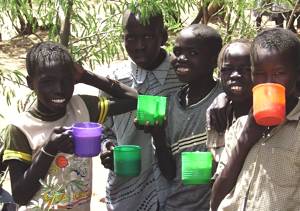 Thanks to a Food for Education program, the United States will donate 11,000 tons of rice, vegetable oil, yellow peas and lentils valued at more than $21 million for projects to help feed 390,000 children in Haiti and Afghanistan, it was announced Friday.
Thanks to a Food for Education program, the United States will donate 11,000 tons of rice, vegetable oil, yellow peas and lentils valued at more than $21 million for projects to help feed 390,000 children in Haiti and Afghanistan, it was announced Friday.
The food is being made available under the McGovern-Dole International Food for Education and Child Nutrition Program, which supports education, child development and food security in low-income, food-deficit countries that are committed to universal education.
To date, the Food for Education Program has provided meals to more than 22 million children.
The program not only provides donations of U.S. agricultural products but financial and technical assistance for school feeding and maternal and child nutrition projects, as well. Currently, the United States funds 32 active agreements with 15 sponsors, such as World Vision, in 28 countries to assist more than 5 million beneficiaries.
“The food provided through the McGovern-Dole program is an important part of our efforts to alleviate child hunger around the world,” said Agriculture Secretary Tom Vilsack in his October 1 announcement.
The sponsors in Haiti, Haiti Vision and the World Food Program, will help ensure hungry children receive food valued at $9.6 million. In Afghanistan, World Vision will help make sure $11.8 million in food aid is delivered to the children who need it.
The program is named in honor of former Senator George McGovern and former Senator Robert Dole for their efforts to encourage a global commitment to school feeding and child nutrition. In October 2008, the men were recognized with the World Food Prize for their leadership in forging the link between the productivity of American farmers and the needs of hungry children around the world.
Both Haiti, stuggling post-earthquake, and Afghanistan, in the midst of war, meet the program’s requirements which include:
• Per capita income at lower or lower-middle income standards
• Greater than 20 percent prevalence of undernourishment
• Adult literacy rates below 75 percent
• Being a net food importer
• Government commitments to education.
Additional information about the McGovern-Dole Program is available on the U.S. Agriculture Department’s website.
(Source: Bureau of International Information Programs, www.america.gov)



















